People banned from walking on Anglesea beach as cliff shows signs of imminent collapse
By Rachel Clayton
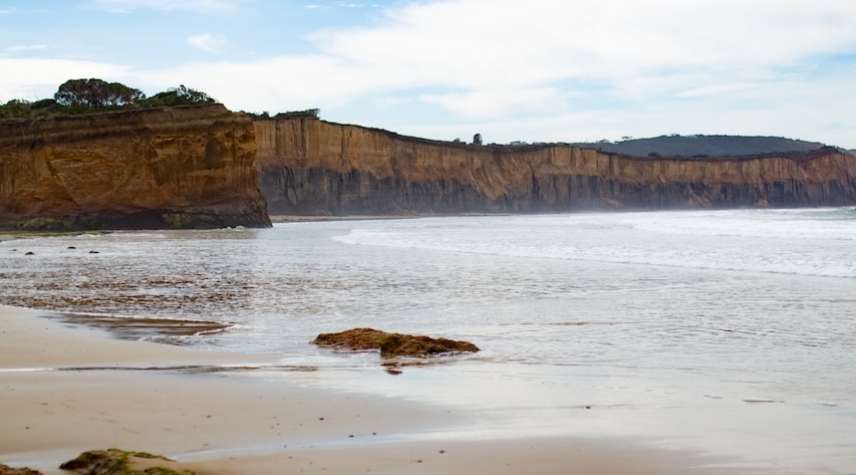
The beauty of Demons Bluff comes from millions of years of erosion.
It’s one of Anglesea’s most iconic landscapes, but the reason for its beauty is why it’s now off-limits.
A 2-kilometre section of coastline in Anglesea called Demons Bluff was temporarily closed in March but the risk to human life of an inevitable landslip has led the Great Ocean Road Authority (GORA) to make the closure permanent.
The cliff line at Demons Bluff has eroded over tens of millions of years, creating the sandy beach below and towering red cliff face.
Beachgoers have been banned from 100 metres north of the Anglesea Family Caravan Park beach access ramp to 300m past the popular surf break Grinders Point.
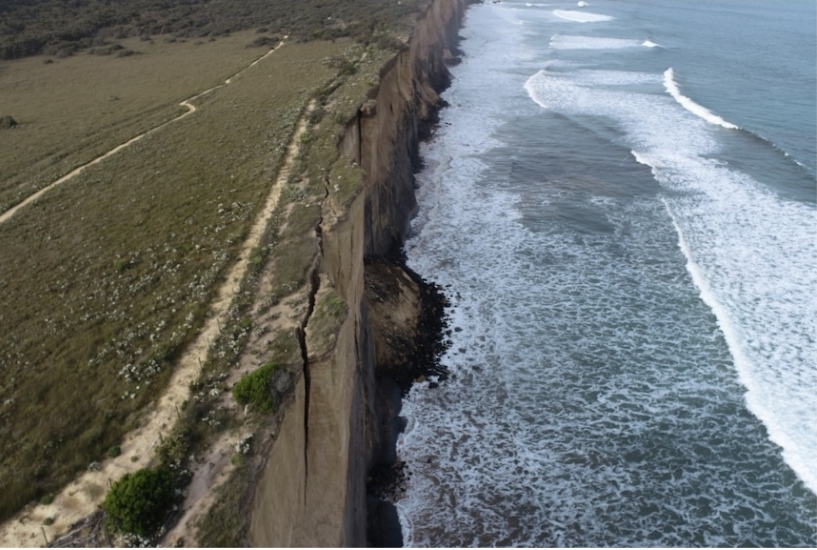
Current cracks show how close the old Surf Coast Walking track is to falling into the ocean.
The decision was not an easy one to make, GORA director Paul Jane said.
But after three years of watching a crack in the cliff grow from a hairline to a gaping hole, the risk was too great to keep the beach open.
While he hoped the public would stay away, Mr Jane said the authority would introduce fines if people continued to access the beach.
“We certainly don’t want to do that, we want to take an approach where we are informing the community, acknowledging the risk and making sure people stay away from the area for their own safety,” he said.
Within the past 12 months there have been some significant falls, he said, but an even bigger collapse was approaching.
“As it stands there’s a crack that runs for about 60 metres long down the cliff, so if we have a failure anybody under that cliff may be in significant jeopardy,” Mr Jane said.
The crack was detected by 10 local citizen scientists who have been monitoring the cliff with drones for three years.
David Kennedy is an associate professor of environmental programs at the University of Melbourne who led the citizen science project and said erosion was what made Demons Bluff so “spectacular”.
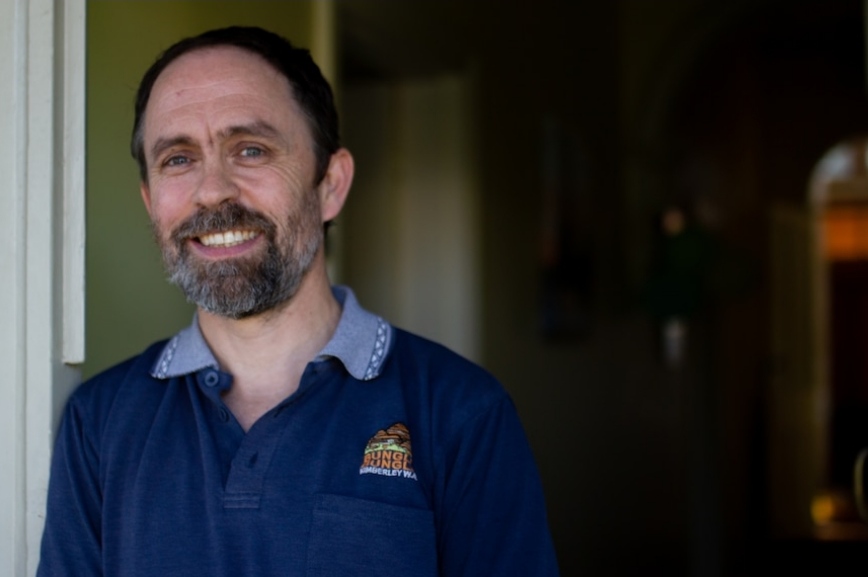
David Kennedy is leading a citizen science project to document the cracks on top of Demons Bluff.
“The rock itself is about 20 to 30 million years old and it’s right on what we would call rock; it has enough strength to hold up a cliff face but it’s not hard enough to build anything out of,” he said.
“It’s really a soft material and because of that it erodes quite quickly.”
And that erosion is what has created the sandy beach below.
The cliffs at Anglesea have enough strength to stand vertically, but once waves erode the base, it cannot hold up the upper ledge for long.
But erosion on the cliffs does not happen centimetre by centimetre, Associate Professor Kennedy said.
“It’s one big event.”
Which is why the cliffs pose such a danger to people walking underneath.

A large chunk of cliff collapsed at Demons Bluff in 2019.
The citizen scientists have watched a crack about 10 centimetres wide grow to 70cm over the past few years, and that part of the cliff “is about to go”, Dr Kennedy said.
The chunk measures about 30 metres by five metres, and has a volume equivalent to two Olympic-sized swimming pools.
“Water is dripping into those cracks and the runoff goes right down to low tide,” he said.
“I wouldn’t want to walk there myself now. It will fall as a pile of rubble and that rubble will run out right down to low tide so if anyone is there when it goes they’re either going to be buried or hit by a pile of rubble.”
Exploding the cliff considered
GORA’s Paul Jane said other solutions were looked at before the decision was made to close the beach.
Netting was considered, similar to the nets covering parts of the cliff along the Great Ocean Road.
But Demons Bluff’s soft, almost sand-like rock would just fall through the nets, Mr Jane said, so it was ruled out.
The next idea was a “mechanical failure” — blasting the cliff to get the fall over and done with.
But the soft rock of the cliffs extends all the way into the township so blasting it may have just pushed the erosion closer to roads and buildings.
“We got expert advice and found out we wouldn’t know where that would stop, it would be a mechanical failure and failure and failure,” Mr Jane said.
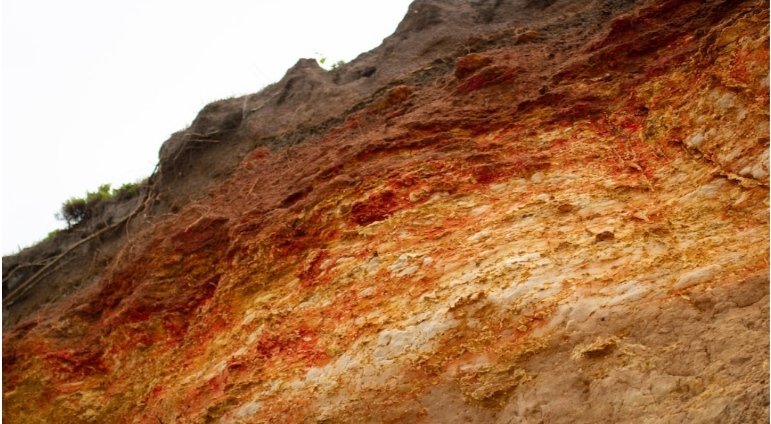
Demons Bluff is a popular natural attraction due to the deep orange-red hue of the rocks.
The last option considered was to block the space beneath the cliff “with some sort of structure”.
“But we didn’t want to do that. The structure would have to be significant to keep people back and it certainly wouldn’t add to the amenity of the beach.”
Mr Jane said local feedback had been mostly positive and new signs would be erected on the beach to make the beach closure clear.
“People understand the risk and understand the measures are there to protect them.”
While walking on the sand is banned, people can still kayak along the waters and surf, as long as they don’t enter the water at Demons Bluff.
With the citizen science project continuing, there could come a time when the beach is opened again, Mr Jane said.
“If the cliff does fail and the risk is averted they can open up the area again.”
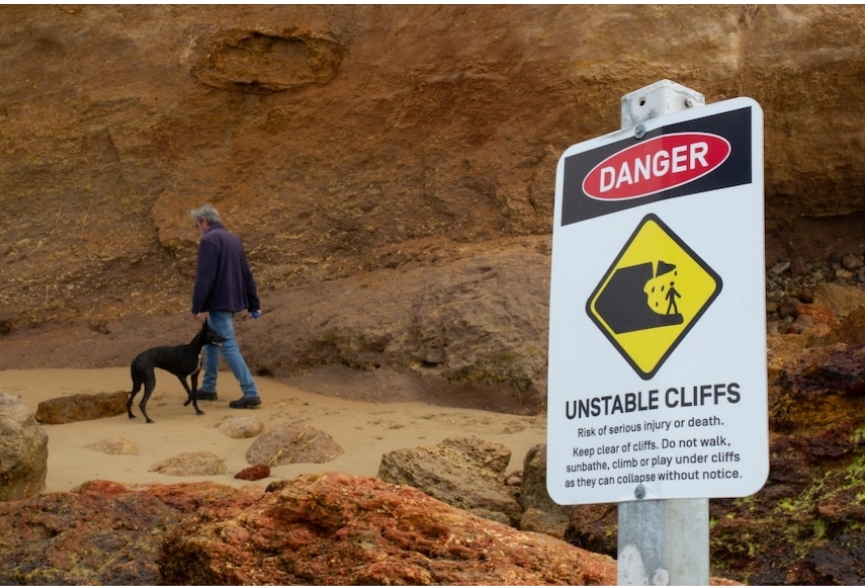
New warning signs will replace these current ones to better warn people of the risk of cliff collapse.(
Climate change could exacerbate erosion in 50 years
While climate change is not playing much of a part in erosion at the moment, Dr Kennedy said sea-level rise could increase the energy in the waves hitting the base of the cliffs, forging bigger cracks at the top.
“But what has the biggest effect is rainfall,” he said.
“So in the next 10 to 20 years there won’t be a big effect from climate change but as we get to the 50 to 70-year mark, there will be a sudden rise in the rates of erosion.
“As the tropics are warming our waters are intensifying. That energy reverberates up the cliffs with every wave that hits them.”
And eventually, Anglesea’s township will start eroding.
But not in the near future.
“In a few hundred years, eventually, the cliff will go back,” he said.
Source : ABC news Australia



